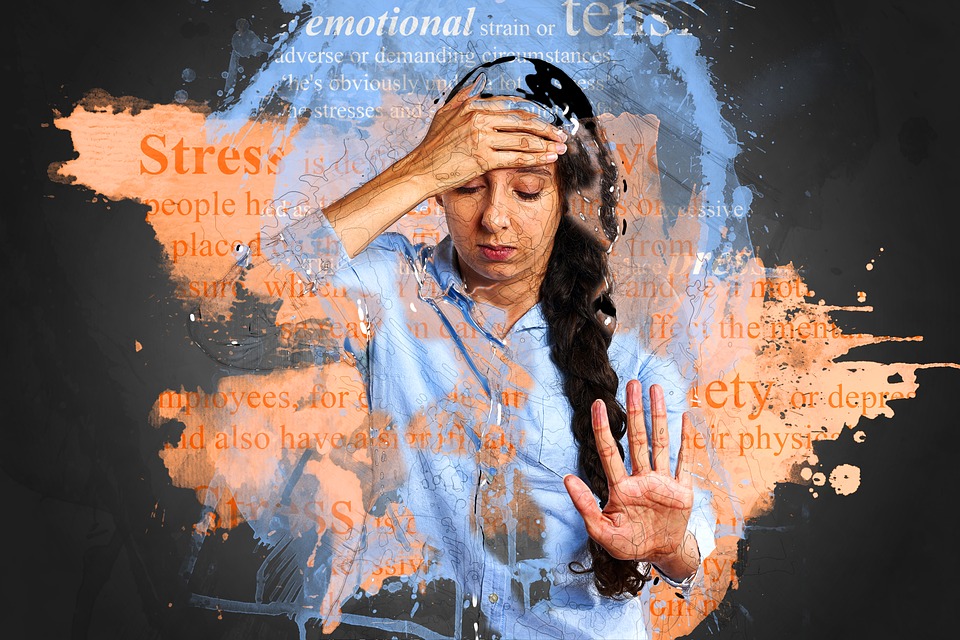Feeling anxious or tensed now and then about certain things like sagging economy, while facing a problem or even before an examination is a normal emotion and need not to be confused with any sort of a mental illness or an anxiety disorder. However, when every situation around you feels like an alarm or emergency i.e. the symptoms of distress constantly hinder you from carrying on with your life normally, this is an alarming sign when you require proper treatment with professional and personal care to manage those feelings and overcome your unrealistic fears.
According to the WHO reports, anxiety disorders are the most common mental disorders and 1 in every 13 people globally suffers from it. While anxiety disorders are highly treatable yet only 36.9% of those suffering with it receive proper treatment.
Some of the basic symptoms observed in those suffering with Anxiety disorders are:
- Disturbed sleep cycles
- Breathlessness
- Heart palpitations
- Cold, numb, sweaty or shaking hands and feet
- Dizziness and headache
- Painful memories with reoccurring nightmares
- Nausea
- Tense muscles
- Dry mouth and not being able to stay calm
Some may even be associated with certain disorders like bipolar disorder, BDD (body dysmorphic disorder), Adult ADHD (attention deficit/ hyperactive disorder), IBD (Irritable bowel disorder), depression, diabetes and substance abuse.
Types of Anxiety disorders:
Uncontrolled anxiety can manifest in any of the following anxiety disorders:
1) Generalized Anxiety Disorder (GAD): It is a type of disorder where patients worry about everything but nothing in particular i.e. they have an apprehension about occurrence of an event that is unlikely to happen but might take place accidently e.g. losing a family member in an accident when they leave for work, getting hit by a car while walking on a footpath, etc. These worrisome thoughts are followed by symptoms like heart palpitations, uneasiness, etc.
2) Obsessive Compulsive Disorder (OCD): It results in constant unwanted thoughts that leave people puzzled and disturbed with their imaginary conclusions e.g. washing hands several times even after touching a clean object, checking the gas knob constantly and still believing it might be on, etc.
3) Panic Disorder: It is often characterized by sudden waves of terrific mental disturbance known as panic attacks. People experiencing it may think that they’re dying with signs of breathlessness, sweating, dry mouth, etc. These acute attacks usually subside in a while but leave the person disturbed for rest of the day. This shouldn’t be confused with GAD and professional advice must be taken. Apart from this, it is advised that people suffering from panic disorders should avoid alcohol, caffeine, chocolate, and nicotine. These substances may increase anxiety. Besides, some illegal drugs, such as cocaine, crack, and speed (amphetamines) can also cause anxiety.
4) Post Traumatic Stress Disorder (PTSD): It is experienced after a sudden shock or an event disturbing one’s normal state of mind e.g. death of a loved one, losing a job, child abuse, etc. A person suffering with it unintentionally relives the events constantly in the form of imaginations and dreams which leaves him distressed and causes symptoms associated with anxiety.
5) Social Anxiety Disorder: It is also called social phobia and leaves a person in a state of mind where one has an apprehension of being judged or ridiculed by the society and thus the person feels excessive self consciousness and lacks confidence in everything it does.
6) Other Phobias: Many people experience certain fears about occurrence of a particular event or site like agoraphobia (fear of open spaces), acrophobia (fear of heights), thalassophobia (deep water bodies), etc or objects like spiders, eagles, etc. To a certain extent it is normal but when the fear goes beyond one’s control and the person reacts abnormally with symptoms of anxiety, the person must seek medical advice with proper care.
Diagnosis: If a person shows symptoms indicating an anxiety disorder, the doctor will examine the patient and ask about his/her medical history. Tests maybe runned in order to rule out any other illnesses suspected but no particular test is available to diagnose anxiety disorders.
Anxiolysis: Anxiolysis or anti anxiety treatment is administered by using anxiolytic medications e.g.
- Antidepressants like Elavin, Anafranil, etc are known to reduce anxiety or relive the symptoms caused, by increasing the concentration of neurotransmitters e.g. nor epinephrine, serotonin and dopamine.
- Benzodiazepines and Pregabalin work by increasing the activity of GABA (gamma-aminobutyric acid) which inturn reduces the brain activity and anxiety.
- Buspirone, Hydroxyzine and Anti Histamine are also known to show promising results in reducing anxiety symptoms.
However, administration of these drugs is often found associated with minor side effects like dizziness, headache, nausea, weight gain, etc.
- Some of the Herbal anxiolytics include Ashwaganda, lemon balm, Kava and green tea.
- Some nutritional supplements are also known to relieve the symptoms of anxiety e.g. omega-3 fatty acids, vitamin C, magnesium, selenium, L- lysine, L- arginine, L- tyrosine and L- phenylalanine.
Besides, being physically active and doing yoga on a regular basis also has a significant effect on overcoming anxiety disorders in addition to standard medical therapy.
References:
1) Alt A, Nisenbaum ES, Bleakman D, Witkin JM (2006) A role for AMPA receptors in mood disorders. Biochem Pharmacol 71:1273–88.. 2) Belmaker RH, Agam G (2008) Major depressive disorder. N Engl J Med 358:55–68.. 3) Bitanihirwe BKY, Woo TUW (2011) Oxidative stress in schizophrenia: an integrated approach. Neurosci Biobehav Rev 35:878–893. 4) Horn SR, Charney DS, Feder A (2016) Understanding resilience: new approaches for preventing and treating PTSD. Exp Neurol 284:119–132.. 5) Heilig M, Koob GF, Ekman R, Britton KT (1994) Corticotropin-releasing factor and Neuropeptide Y: role in emotional integration. Trends Neurosci 17:80–85.. 6) https://adaa.org/about-adaa/press-room/facts-statistics .. 5) https://www.clearviewtreatment.com/blog/types-of-anxiety-disorders/; 6) https://www.cell.com/cell-reports/fulltext/S2211-1247(18)31842-4?_returnURL=https%3A%2F%2Flinkinghub.elsevier.com%2Fretrieve%2Fpii%2FS2211124718318424%3Fshowall%3Dtrue ,7) https://ars.els-cdn.com/content/image/1-s2.0-S2211124718318424-fx1.jpg ; 31/05/2019 at 6:40 PM.
